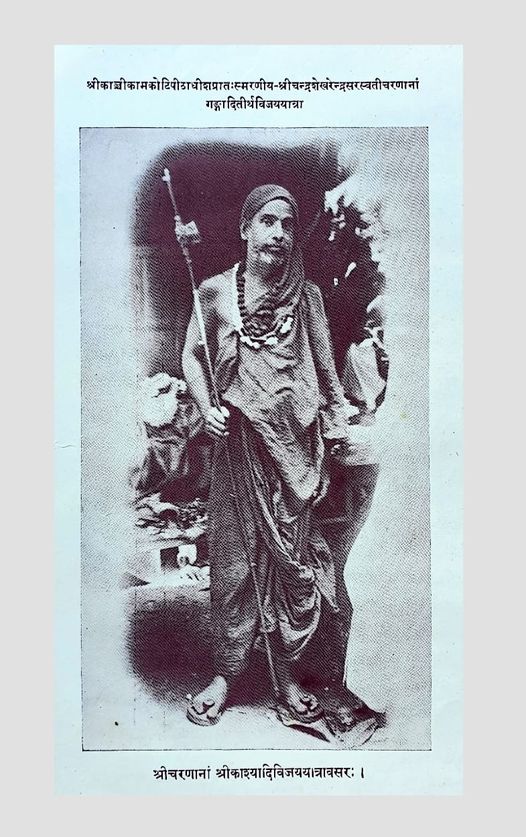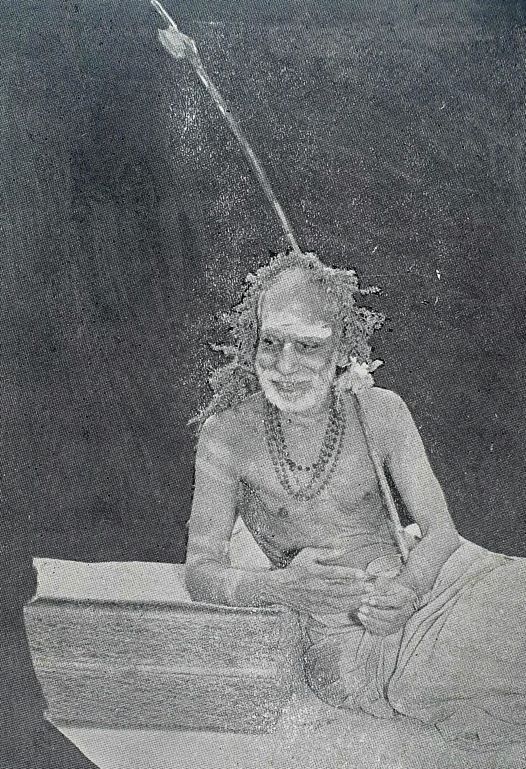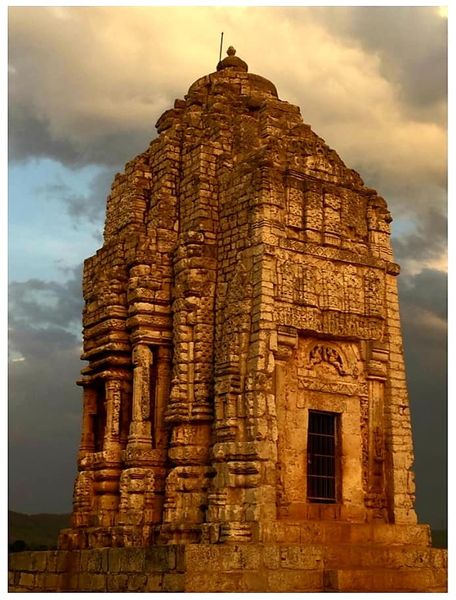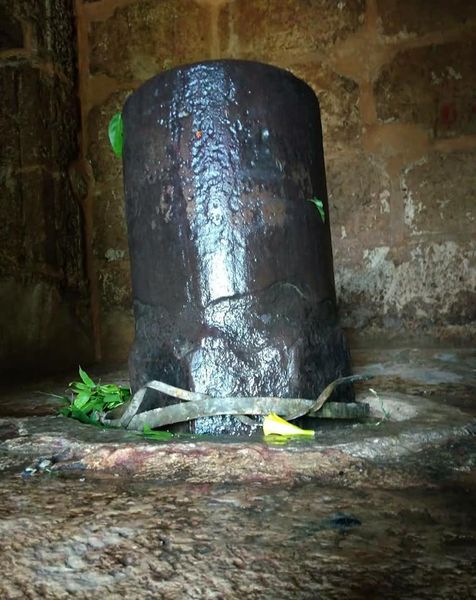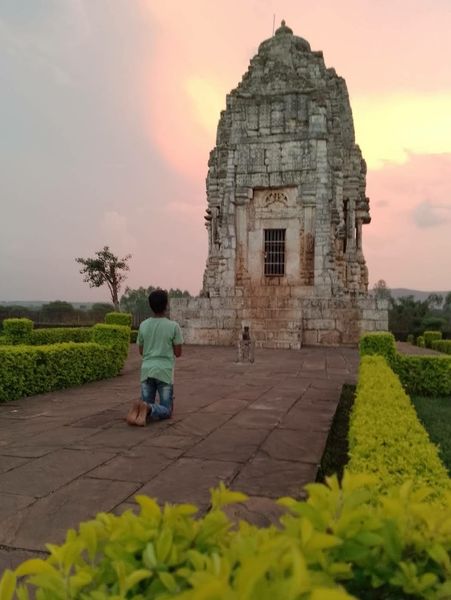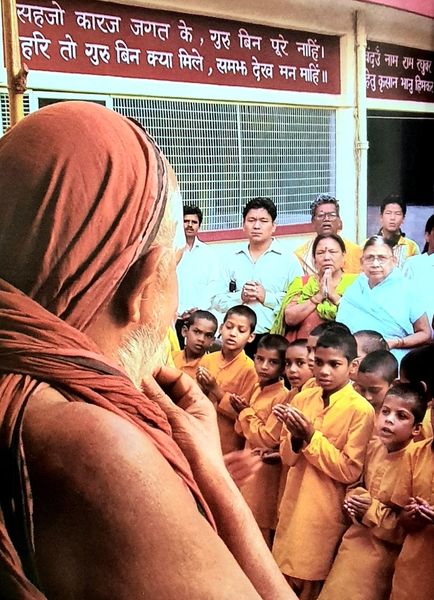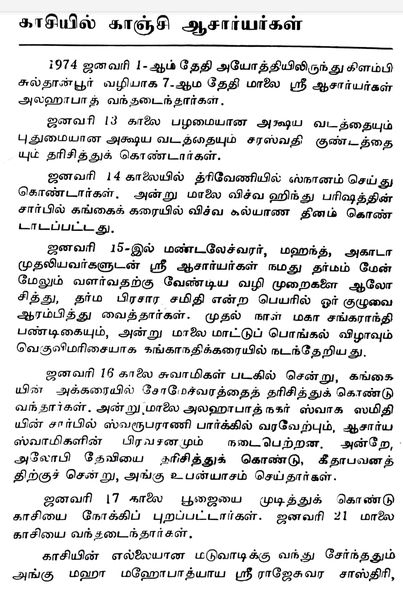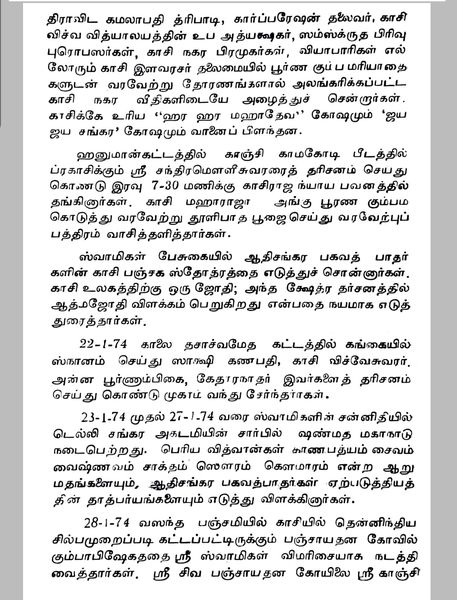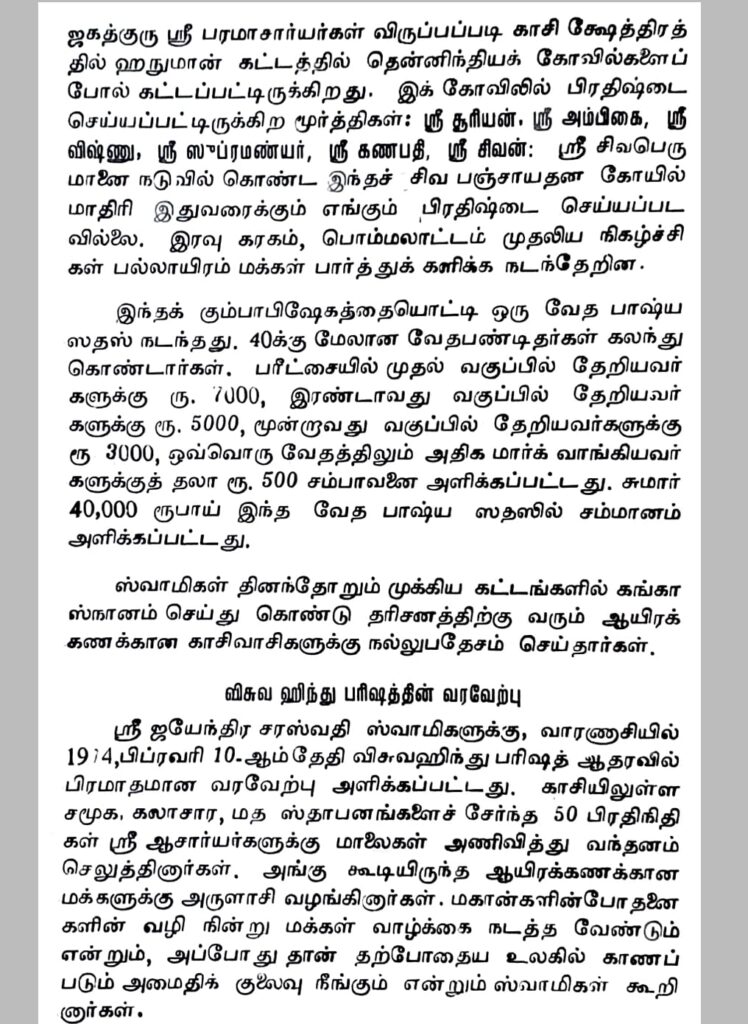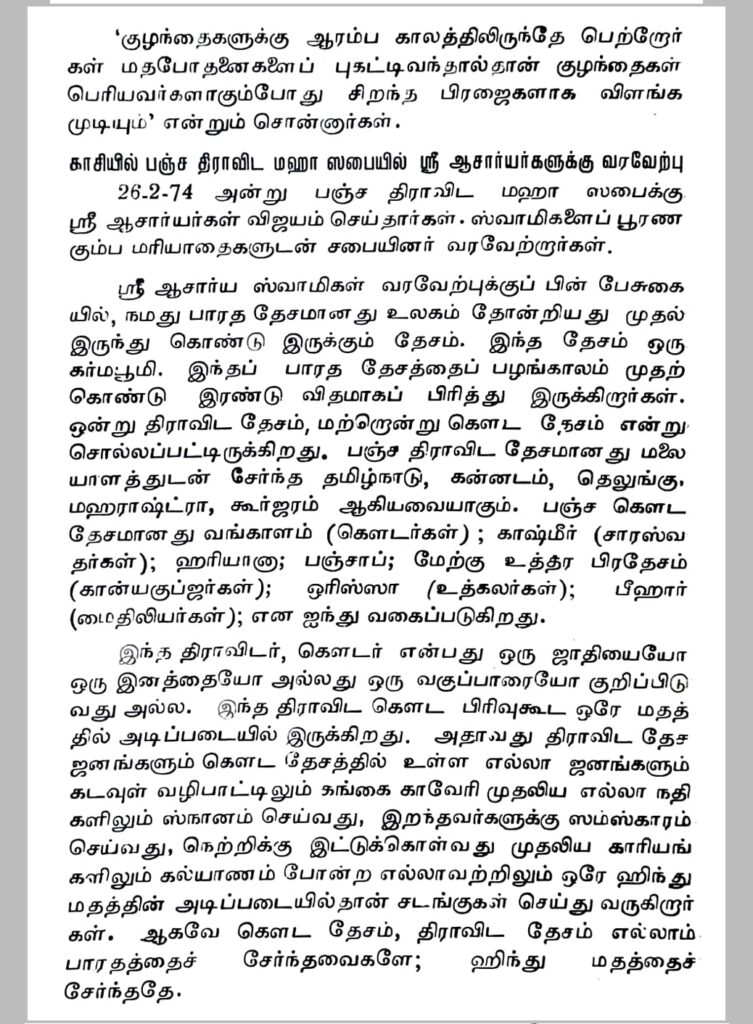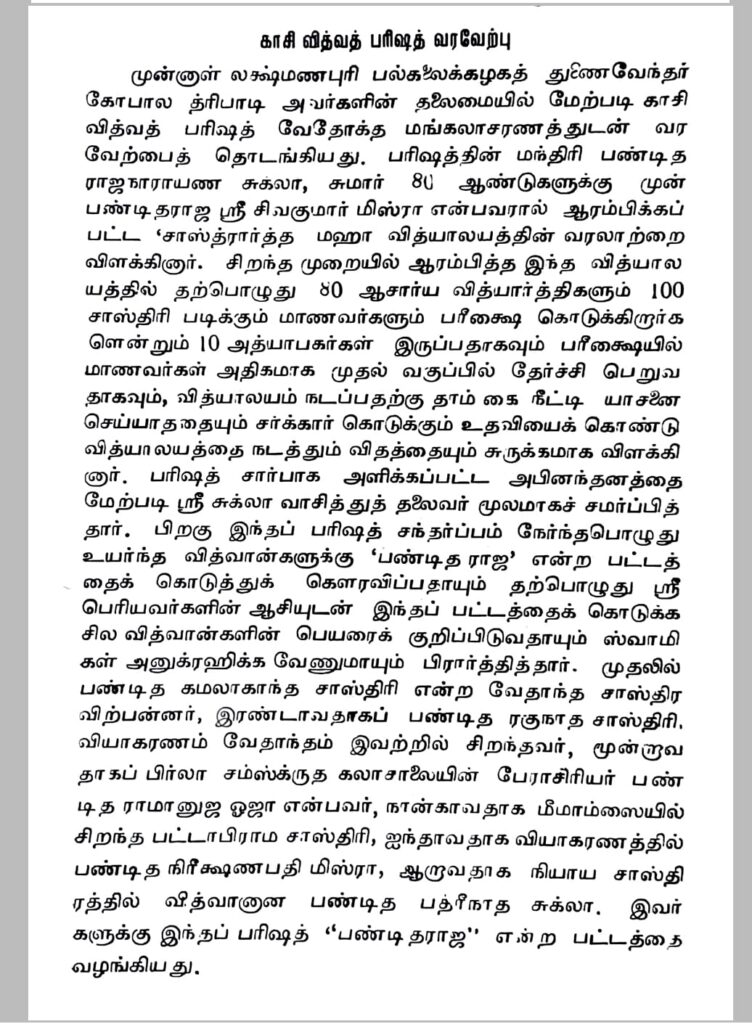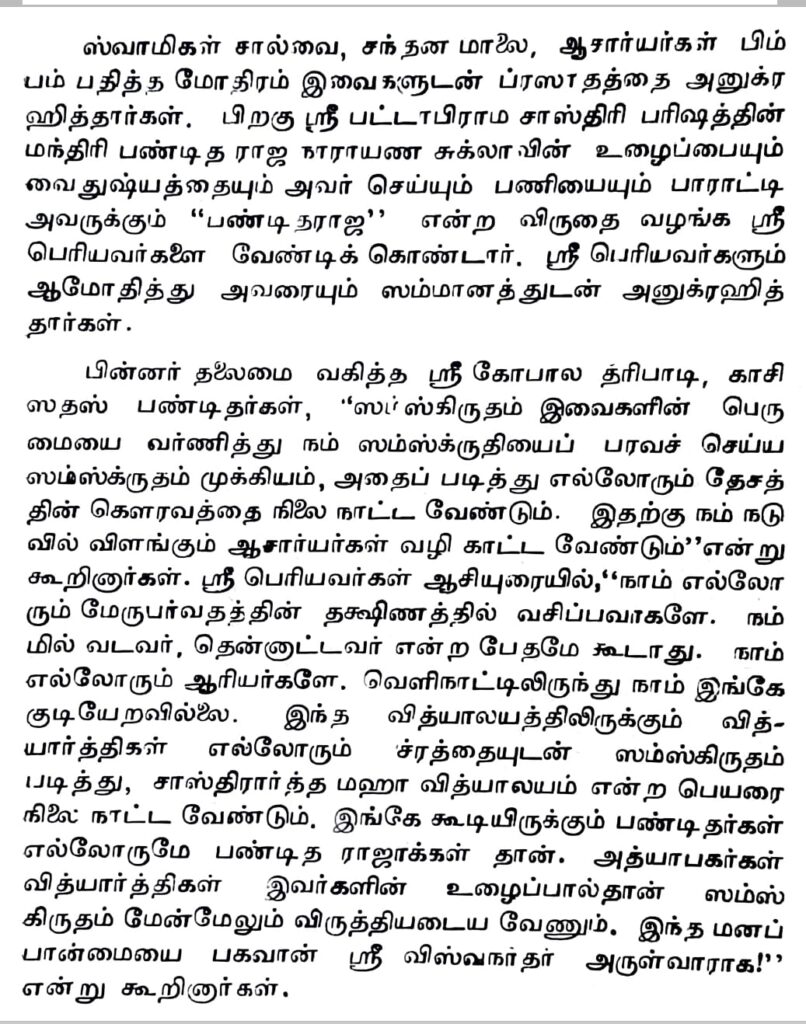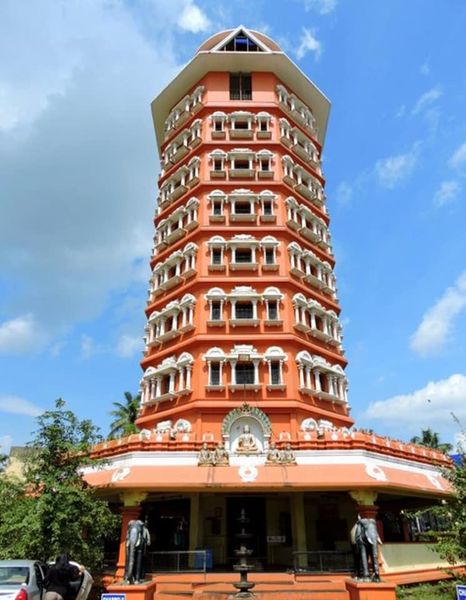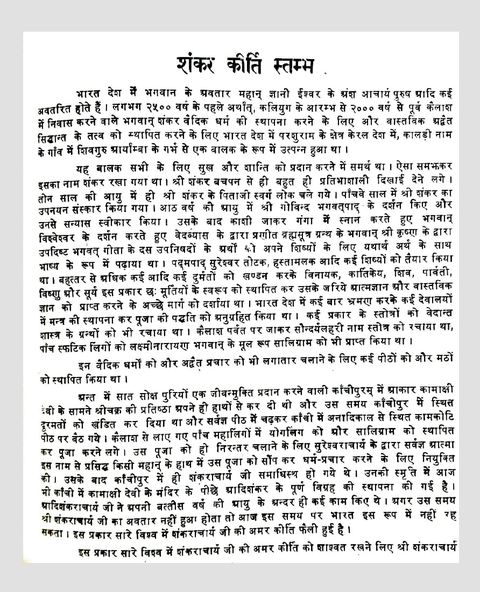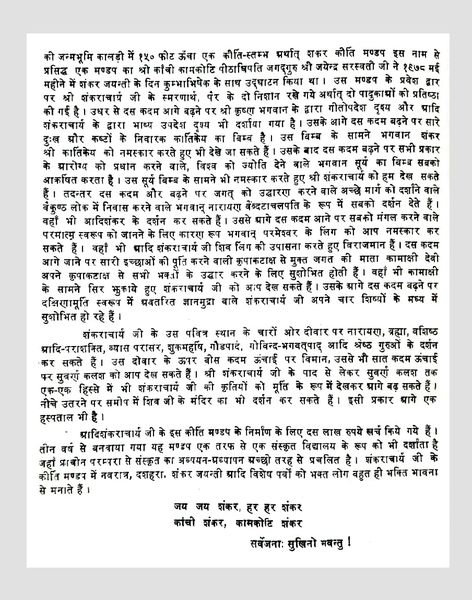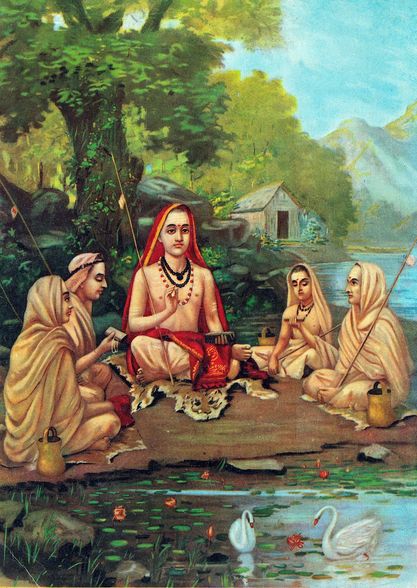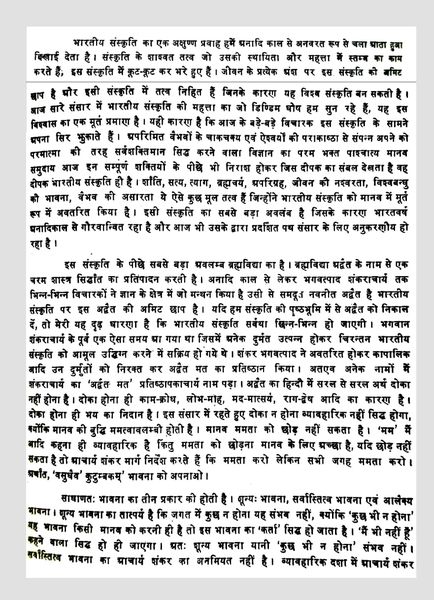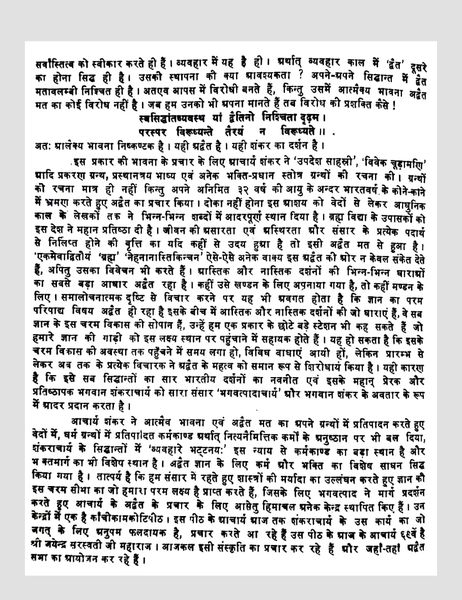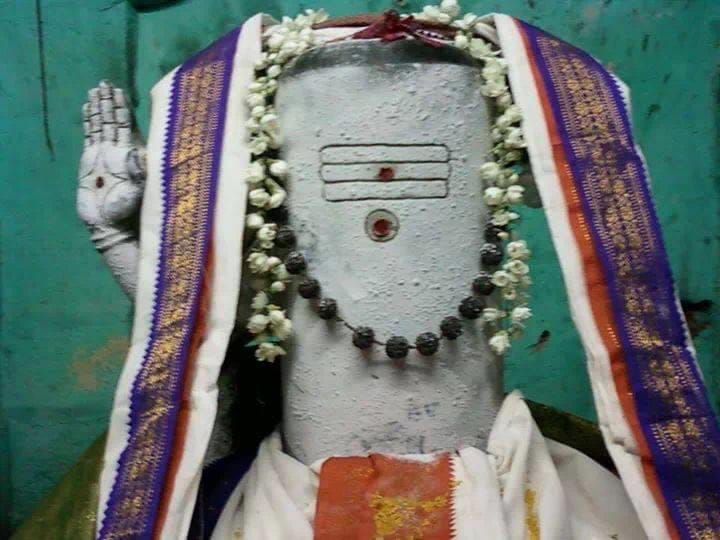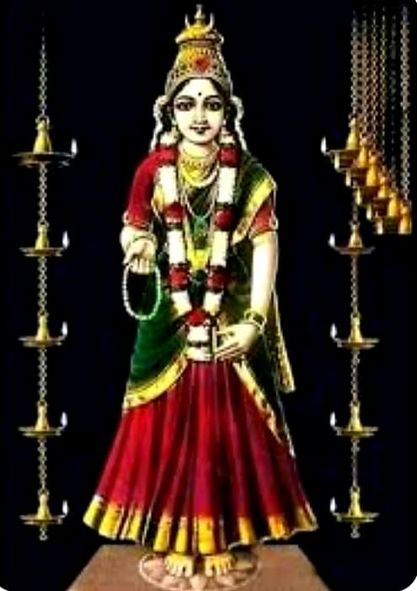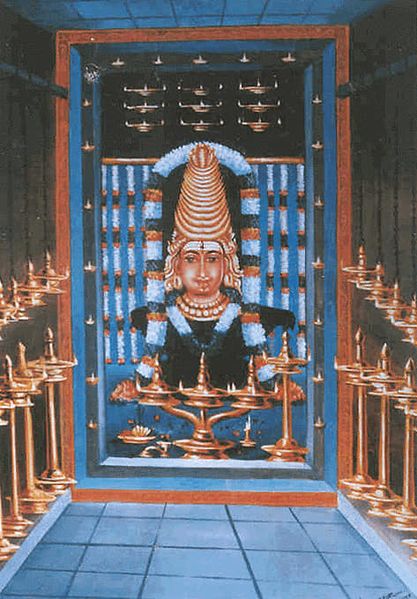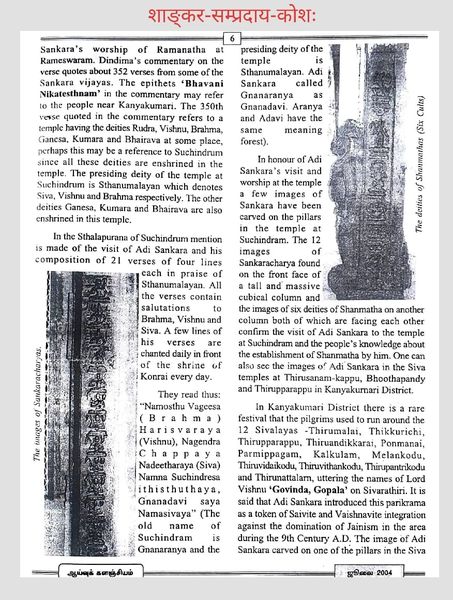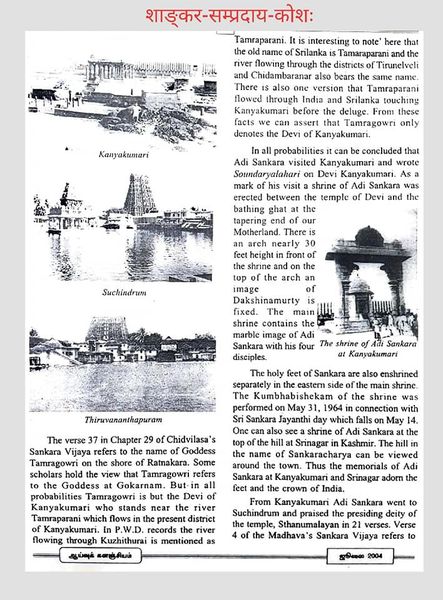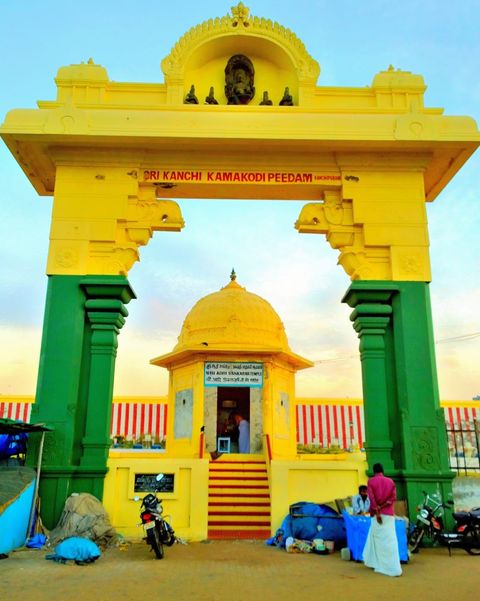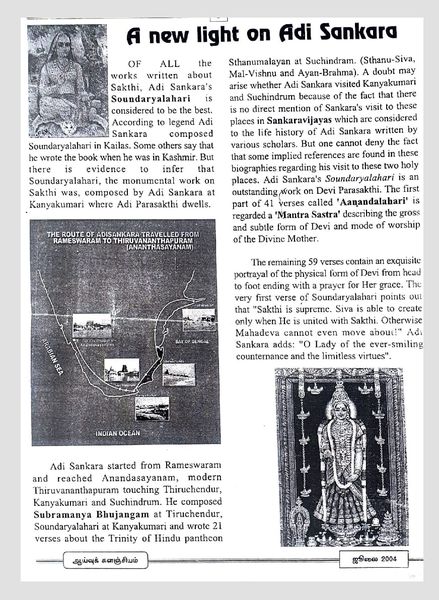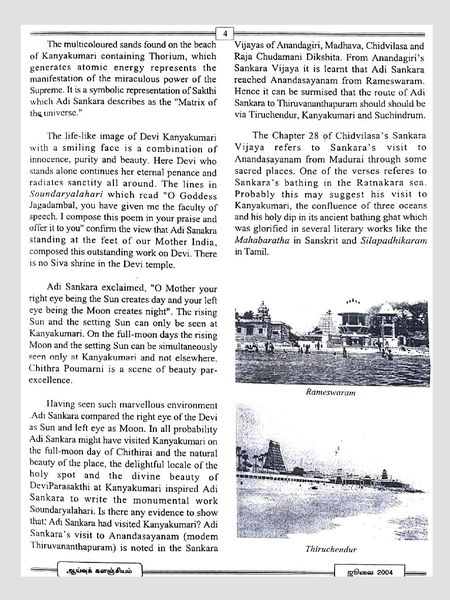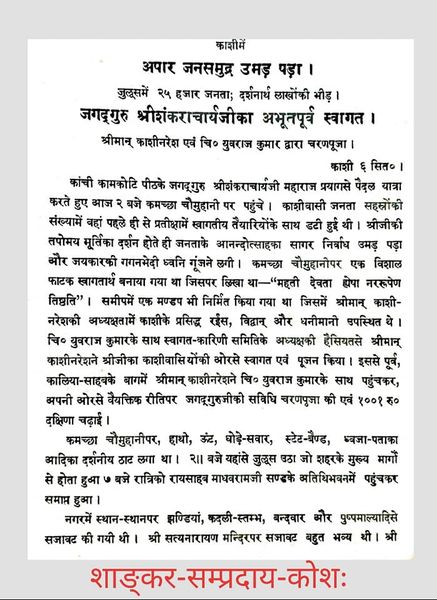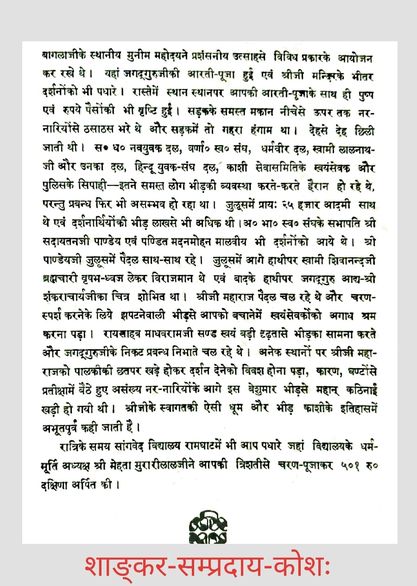ஸ்ரீபஞ்சானன தர்க்கரத்ன பட்டாசார்யர்.. (இரண்டாம் பகுதி)
கல்கத்தா மாநகரில் ஸ்ரீ மஹா ஸ்வாமிகள் சுமார் 100 தினங்கள் தங்கியிருந்தார்கள். பல நாட்கள் அவர்கள் நகரின் பல பகுதிகளிலுள்ள பல நிறுவனங்களுக்கு விஜயம் செய்வார்கள்; பல தார்மீக விழாக்களுக்கும் செல்வார்கள்.
அப்போதெல்லாம் ஸ்ரீ ஆசார்யாளுடன், பட்டாசார்யரும், கல்கத்தா ஸர்வகலாசாலையில் பேராசிரியராக இருந்த அவரது குமாரர், ஸ்ரீஜீவன் நியாயதீர்த்தரும், ஸ்வாமிகளுடன் சென்று, அந்த உரையாற்றுவர். விழாக்களில் பங்கு கொண்டு. 1935-ஆம் ஆண்டு சாதுர்மாஸ்ய வ்ரதத்திற்கு ஸ்ரீ ஆசார்யாள், கல்கத்தாவின் காளிகாட் பகுதியில் தங்கியிருந்தார்கள்.
அப்போது ஒருநாள் மாலை. தம்மிருப்பிடத்திலிருந்து கடுமையான வெயிலில் பட்டாசார்யர் ஸ்ரீ ஸ்வாமிகள் முகாம் செய்திருந்த இடத்திற்கு வந்து சேர்ந்தார். அப்போதுதான் சிறிது இளைப்பாறிய ஸ்ரீஆசார்யாள், பட்டாசார்யர் வந்துள்ளதை அறிந்து, அவரை அழைத்துவரும்படி ஒரு தொண்டரை ஏவினர்.
சில நிமிடங்களில் அங்கு வந்த பட்டாசார்யர், ஸ்ரீ ஸ்வாமிகளுக்கு வந்தனம் செய்துவிட்டு நிற்க, ஸ்ரீ ஆசார்யாள் அவரை அமரச் சொன்னார். அவரும் அருகில் அமர்ந்தார். அவருக்கு சரீரம் சற்று ஸ்தூலமானது. ஸ்ரீ மஹா பெரியவர்கள் அவரை நோக்கி, “இவ்வளவு கடுமையான வெப்பத்தில் ஏன் வரவேண்டும்?” என (ஸம்ஸ்க்ருதத்தில்) கேட்க, பட்டாசார்யர், “இந்துசேகரனின் குளிர்ச்சியில் திவாகரனின் உஷ்ணம் என்ன செய்யும் ?”* என்று பதில் கூறினார். இப்படி அவர் கூறிய சில நிமிடங்களில் மழை தூர ஆரம்பித்தது; குளிர்ந்த காற்றும் வீசலாயிற்று. அப்போது பட்டாசார்யர் “நான் ஸ்துதிவாக்யமாகச் சொல்லவில்லை, சொன்னது உண்மை என இப்போது விளங்கிவிட்டது”, என்றார். இதனைக் கேட்ட ஸ்ரீ ஆசார்யாள் மெல்லச் சிரித்தார்கள். அன்று முதல் பட்டாசார்யருடைய தங்குமிடத்திற்குத் தினமும், மதியம், மடத்தின் குதிரை வண்டியை அனுப்பிவைக்கும்படி, கார்வாரிடம் ஸ்ரீ மஹா ஸ்வாமிகள் உத்திரவிட்டார்கள்.
கல்கத்தா மாநகரை விட்டுக் கிளம்பி, ரூப் நாராயண், தாமோதர் நதிகளைக் கடந்து, தென் வங்காளத்தின் வழியே ஸ்ரீ ஸ்வாமிகள் யாத்ரையை மேற்கொண்டபோது, தெற்கு வங்காளத்திலுள்ள, பாஞ்ச்கூடா, பாட்பாரா முதலிய க்ராமங்களில், ஒவ்வொன்றிலும் இரண்டு அல்லது மூன்று நாட்கள் தங்கியிருந்தார்கள். அந்த க்ராமங்களுக்கெல்லாம் பட்டாசார்யரும், அவரது குமாரர் ஸ்ரீஜீவனும், முன்னதாகவே சென்று, ஸ்ரீ ஸ்வாமிகள் தங்குவதற்கான ஏற்பாடுகளைச் செய்தும், உடனிருந்தும், கைங்கர்யம் செய்து வந்தனர். வங்க தேசத்தைச் சேர்ந்த மிகப்புகழ் வாய்ந்த ஒரு மாபெரும் அறிஞர் காஞ்சீ மடத்தின் ஸ்ரீ மஹா ஸ்வாமிகளிடம் அபரிமிதமான பக்தியும், மதிப்பும் கொண்டு தொண்டாற்றியது வியக்கத்தக்கது.
* இருவரிடையே ஸம்பாஷணை ஸம்ஸ்க்ருத மொழியில் நடந்தது. இந்து சேகரன் = சந்த்ரசேகரன் (காஞ்சீ ஸ்ரீ மஹா ஸ்வாமிகளின் பெயர்), திவாகரன் = ஸூர்யன்.
(ஸ்ரீ அ.குப்புஸ்வாமி ஐயர் உள்ளிட்டோரின் குறிப்புகளிலிருந்து தொகுத்து வழங்கப்படும் தொடரின் இரண்டாம் பகுதி நிறைவுற்றது.)

